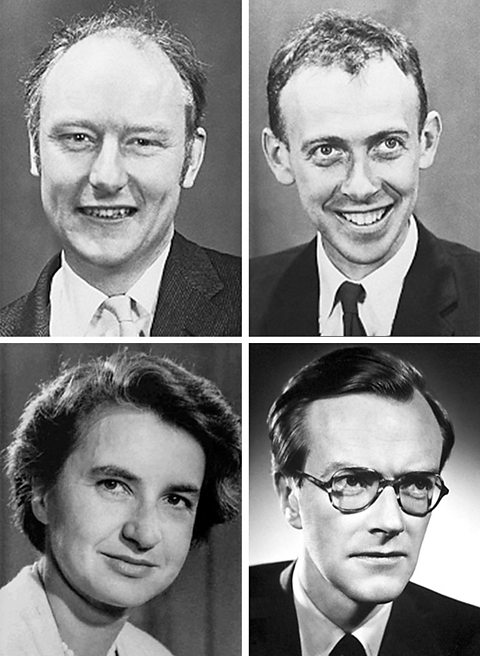The development of drugs since 1945
Since World War Two, there have been significant developments in new medicines, surgery and treatments.
DNA

Rosalind Franklin was an English researcher and an expert in the use of X-raysHigh frequency electromagnetic radiation, used for medical imaging. During the 1950s, she used X-rays to take images of DNAThe part of the cells of living things that carries information about how they look and function. EveryoneвҖҷs DNA is different, except identical twins who share the same DNA. This work was crucial in enabling researchers to start to understand the structure and composition of DNA.
In 1953, Francis Crick (a British researcher) and James Watson (an American geneticistA scientist that specialises in the characteristics passed on between living organisms.) built on the earlier work done by Franklin. They were able to discover the double helix structure of DNA. They wrote about their findings in the medical journal Nature.
The discovery of DNAвҖҷs structure was significant in helping researchers to understand the causes of some diseases. It also allowed a new field of medicine to evolve. This field focused on developing treatments based on the structure and make-up of peopleвҖҷs DNA.
Modern surgery
Since 1945, there have been many advances in surgery. For example:
- In 1967, Christiaan Barnard, a South African cardiac surgeon, carried out the worldвҖҷs first heart transplant.
- In 2005, a partial face transplant was completed for the first time in France. In 2010, the first full face transplant was carried out in Spain.
- Laser surgery has a wide range of uses, including eye surgery, cancer treatments and control of bleeding.
- Keyhole surgery uses microscopic cameras. With this technique, operations take place with just a small cut to allow the cameras to be inserted and the procedure to be completed. This reduces the risk of infection and speeds up recovery times.
Modern treatments
Since 1945, a range of new treatments have been developed. For example:
- The use of IVFThe letters stand for 'in vitro fertilisation'. This involves bringing the sperm and the egg together to create an embryo, which is placed into the woman's womb to increase the chance of giving birth. led to the birth of Louise Brown in England in 1978.
- New vaccineA substance that stimulates the body to produce antibodies to provide immunity against a disease. have been developed. For example, the HPV (human papillomavirus) vaccine is now routinely offered to young people in Britain. This reduces their chance of developing certain cancers.